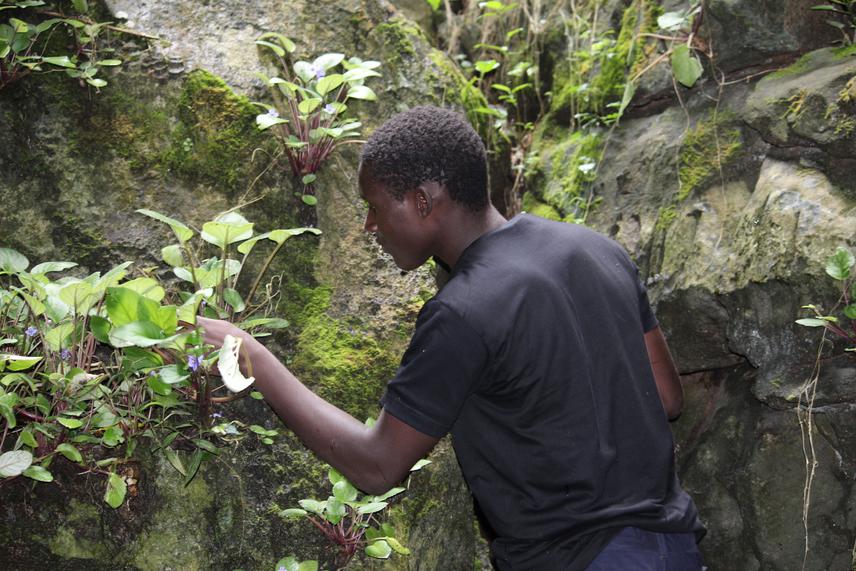Cornelius Kyalo
Other projects
29 Sep 2020
Empowering Local Communities in Biodiversity Conservation: Towards the Conservation of Threatened African Violets (Streptocarpus) at the Coastal Biodiversity Hotspot of Kenya
5 Dec 2023
Habitat-Based Approach to Sustainably Conserve African Violets and other Threatened Plants Housed in Three Irreplaceable Karst Habitats in Coastal Kenya
Projects working to conserve diminishing species (like the African violets) ought to incorporate both data sourcing objectives (informs the possible causes of the danger facing the species), and action-based objectives (implements actions towards the species conservation). Since previous objectives have informed us on the key considerations for African violets’ survival (e.g., habitat health, juvenile survival, pollination services, etc), the present work seeks to act towards a sustainable African violets’ conservation plan. From previous observations (Kyalo et al., 2021, pers. comm), African violets in the wild exhibit massive sprouting of juveniles during the rain seasons, but low maturity rate (very few of these juveniles grow to maturity).

Conducting population census of African violets in Chasimba. © Cornelius Kyalo
Therefore, we will monitor the recruitment vs survival rates in key population patches and establish ‘rescuing gardens’ where the juveniles can be nurtured until transplanting size. It is expected that this action will save many individuals from juvenile mortality. Since majority of the key threats facing African violets are human-driven (the populations, except one, occur in private or community land), there is urgent need to incorporate the locals in the conservation approaches. Whereas, the previous project raised the local awareness (through seminars), here we will strengthen community participation through training them on propagation techniques. The African violets have a specific pollinator; thus, the rate of gene flow rely heavily on the bees’ presence and abundance. Here, we will monitor the pollination activities (bee abundance, frequency, and foraging behaviour) within the four populations. Further, to achieve a sustainable African violets’ conservation, there is a reported need to improve the conditions of the habitats. Previous work reports dryness, and direct sunlight (both caused by vegetation clearance), as the major drivers causing the decrease of African violets. Therefore, we will initiate habitat restoration activities (tree planting) to restore the ecological conditions suitable for African violets.
Header: Tree felling for firewood and charcoal in Kachororoni, Kilifi. © Cornelius Kyalo.